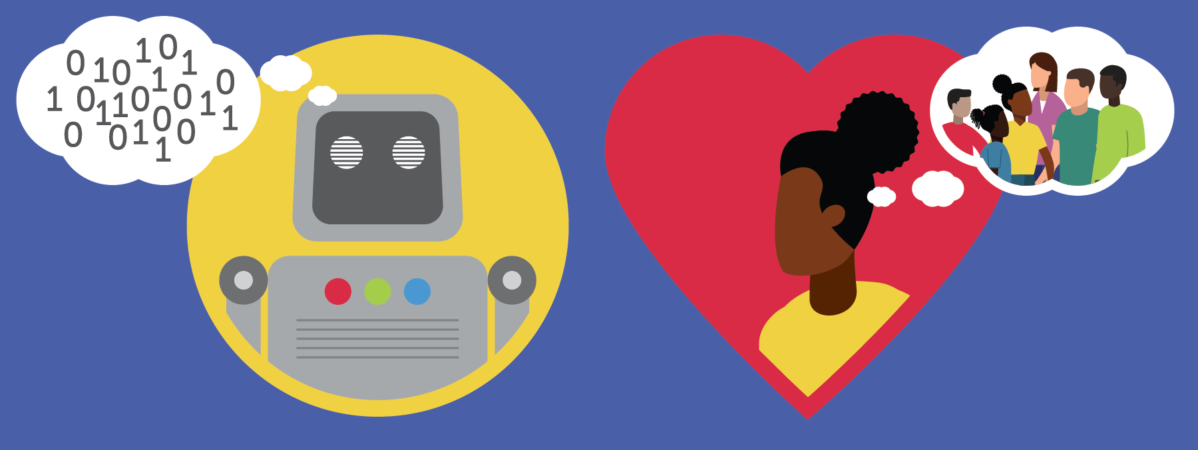
Artificial intelligence (AI) is a field of computer science that lets machines make decisions and predictions. The goal of AI is to create machines that can mimic human capabilities. You are probably using AI systems every day because they are embedded in our mobile phones and cars, and include things like facial recognition to unlock your devices, digital voice assistants to help with calendaring, and driving recommendations based on traffic. We won’t go into the details of how AI works in this post, but you can read a prior introduction to AI and check out this glossary of AI terms if you want more background on the topic. In this post, we will focus on one example of an AI system that can help teachers manage their workload and the importance of engaging teachers in the design of AI systems.
Teachers have to do countless tasks—including lesson planning, teaching, grading, mentoring, classroom management, as well as keeping up with technology and new pedagogical practices, monitoring progress, and other administrative work—all while keeping students’ social and emotional needs in mind. While AI has come a long way since the 1950s when the term was coined and work on Intelligent Tutoring Systems began, it simply cannot replace a teacher in the classroom.
One AI system that helps with classroom management tasks is Merlyn, a multimodal digital assistant specifically developed for teachers with privacy in mind. While Merlyn looks like a small speaker, it is an AI system and allows teachers to use voice and a remote to control content from a distance. For example, teachers can use Merlyn to set timers and switch displays between their laptop, document camera, and interactive whiteboard. Teachers can control a web browser on their laptop and do things like share a presentation, go to a specific point in a video, show a website, or use the search function. This frees teachers up to walk around the classroom and interact with students more easily.
The design of Merlyn involved computer scientists, teachers, and researchers. We believe that AI systems can enable teachers to do the things that humans do best while supporting them by doing things that machines can accomplish. It is important for classrooms and educators—the end-users—to be involved in the design of AI systems.
We understand that most teachers don’t have a single extra minute, but it is crucial to involve current teachers in the design process. Unfortunately, some teams that design AI systems for education have not been in a classroom recently—and if they were, they probably weren’t the teacher. Making technology that works in classrooms requires classroom experts—the main users—to be active participants in the design process and not simply an afterthought.
When teachers give feedback, they can help ensure that 1) systems would work well in their specific classroom scenarios, and 2) systems work in ways that make sense for classrooms in general.
A final, yet very important reason for educators to be involved, is that while AI systems can bring opportunities to support teaching and learning, there are also privacy, ethics, equity, and bias issues to be aware of. As technologies come into more classrooms, we hope educators will ask questions about the potential impact and implementation on behalf of your students. Ask questions about how the system supports students, if the systems were designed for students like your students, what the privacy policies are, and any implications that might affect your students. After getting answers, share any concerns you still have with your principal and or district leadership.Your voices are important. Getting more educators involved creates a more powerful collective voice.